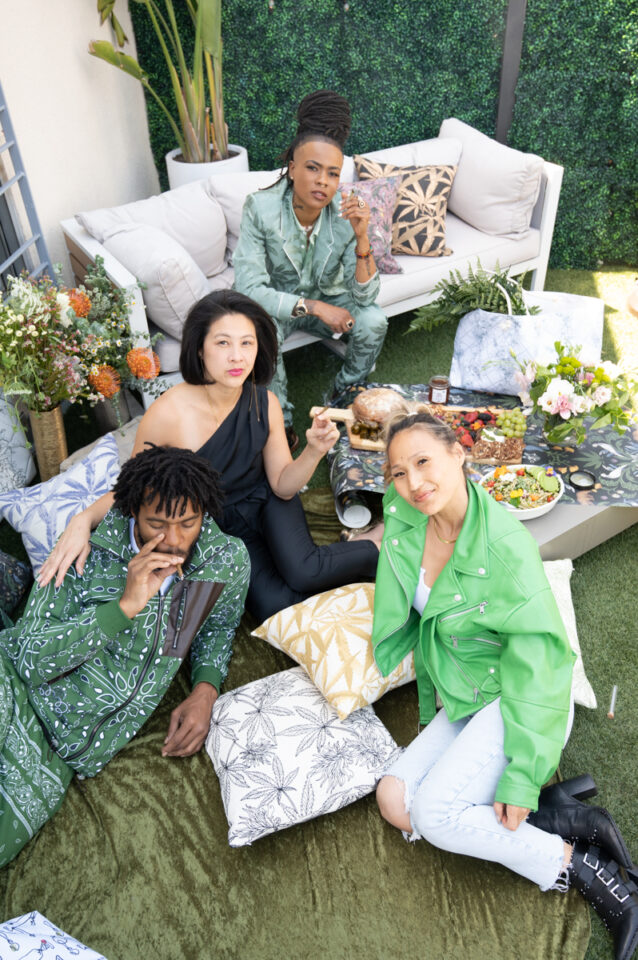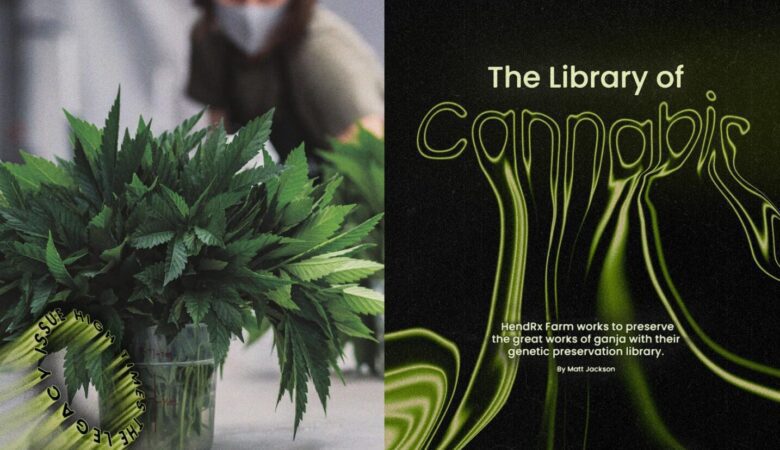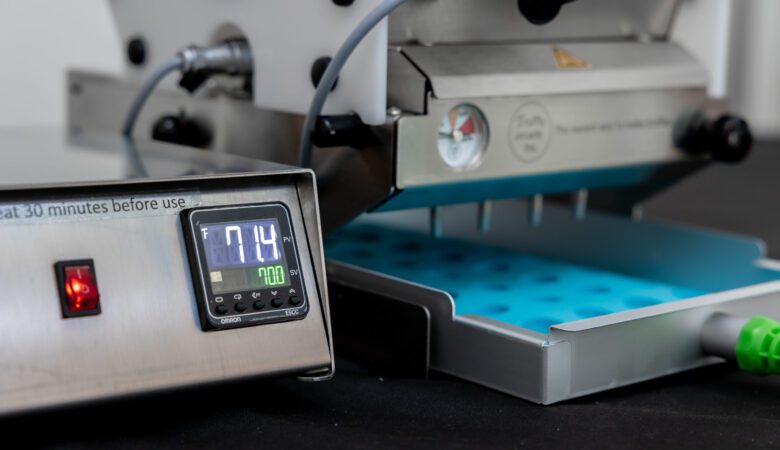[ad_1]
The traditional representation of cannabis culture in home decor is a timeless staple, including everything from mind-bending psychedelic art to Rastafari-inspired colors schemes and unique signage with phrases like “It’s 4:20 somewhere.” While these designs will always be a classic part of cannabis culture, some brands are looking to give cannabis decorations a renovation. With this in mind, artist and interior designer Sarah Rodebaugh created her brand, Chronic Biophiliac, to offer decor alternatives inspired by biophilic interior design, or design centered around our innate need to be close to nature. Rodebaugh has created a variety of sophisticated designs that integrate cannabis leaves and flowers into wallpapers, pillows, and other items, all of which are made with eco-friendly materials.
Rodebaugh initially pursued her passion for interior design following her service in the U.S. Marines in the 2000s. She attended San Francisco State University and obtained a degree in interior design, all while being pregnant. She gave birth to her son during her last semester and right out of college, worked as a commercial kitchen designer in Santa Rosa, California. In 2014, she used her experience and knowledge of legal requirements for commercial kitchens (such as building codes, fire code regulations, hazardous materials codes) and expanded into cannabis manufacturing facility designs, such as ethanol extraction labs, and eventually kitchen design for edibles manufacturing.
Rodebaugh’s work traveled full circle back to residential interior design career when her clients, the founders of cannabis edibles company KIVA, Scott and Kristi Palmer, asked if she would design their home. She searched for wallpaper designs that would reflect the Palmers’ lifestyle and work with the cannabis plant.
“We couldn’t find anything that was just beautiful in regards to the cannabis wallpaper or patterns or anything,” Rodebaugh says. “There’s a lot of psychedelic and there’s a lot of like Rastafarian and a lot of clip art and things like that, which all have their own merit, of course, but there wasn’t anything that [said], ‘Oh, this is just a really beautiful wallpaper for our residential lounge kind of area.’”
In 2020, Rodebaugh began to create her own cannabis wallpaper designs inspired by biophilic interior design.
“Our mental and physical well-being is tied into our necessity to be near nature in whatever way that occurs, whether that’s actually outdoors, or what they do in biophilic interior design or biophilic art,” Rodebaugh explains. “They actually bring the outdoors in with live plants or that kind of thing, but [studies] have found that it’s also beneficial to your mental state, to even have the imagery of those natural elements inside.”
Rodebaugh’s first wallpaper included a geometrical design called “Balance Beam,” which features a simple triangular pattern with cannabis leaves intersecting at every corner.
“That particular pattern goes well in almost any setting,” she says. “I mean, I love imagining it in like a sophisticated library setting and the darker tones, but you could put it in a midcentury, you know, mid-modern environment, and it goes really well.”

Rodebaugh hand draws or paints all the designs for her brand, and then works with an illustrator to help expand upon the original designs with alternate color schemes. “California Vice,” one of her bestselling designs, is inspired by William Morris’s art nouveau design “Strawberry Thief” (1883). Her version features an intricate pattern of California-inspired elements, such as grizzly bears, California poppies, mushrooms, grapes, and cannabis leaves to tie it all together.
Another design, entitled “Cannouveau,” is a glamorous 1950s-inspired art deco and art nouveau pattern with chinoiserie, the evocation of Chinese motifs and techniques in Western art, combined with cannabis leaves, poppy flowers, and ginkgo leaves. All of her designs are available as wallpaper, but some have also been adapted to adorn pillows, canvas totes, bamboo trays, and gift wrap.
In addition to producing refined designs for cannabis consumers to enjoy, she also ensures that all of her products are made with high quality materials and come from trustworthy companies whenever possible.

“I think my [product] lines stay small because I’ve got really very high expectations on making sure that I’m using eco-friendly and sustainable and justice-oriented labor and that type of thing,” Rodebaugh says.
Her wallpaper is sourced from a company called Astek, based in Los Angeles, which produces wallpaper made from 100% Bristol paper and contains no plastic additives, making it compostable and safe to throw away once removed.
Her pillowcases are made from 100% hemp linen, and the interior casing and filling comes from the Colorado-based American Down & Feather, which uses ethically harvested duck down and feathers. After the feather materials are triple washed and sanitized, they are tumbled for hours to ensure they’re properly mixed, and then packed into a 100% organic cotton casing.
“It’s really lovely to have been able to find that and that just feels good sending that out into the world, and it’s all really beautiful quality as well,” Rodebaugh says.
This article was originally published in the November 2023 issue of High Times Magazine.
[ad_2]






Leave a Reply